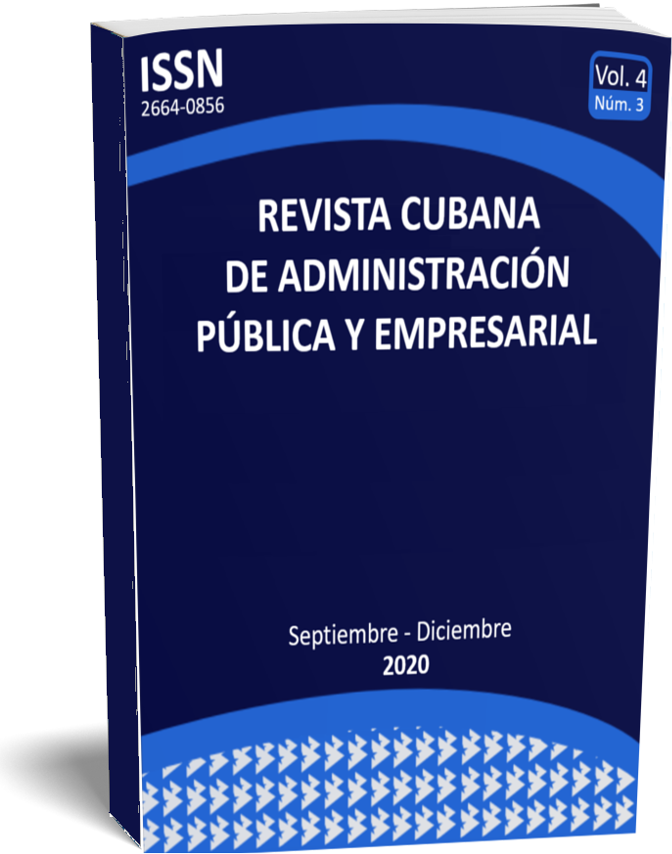Characterization of the patent folder of the center for molecular immunology and its extension strategy for four of its products
Keywords:
patents, biotechnology, extension, cancer, inventionAbstract
Patents are important assets for biotech organizations. The goal of this work is to characterize the patent portfolio of Center of Molecular Immunology as well as the developed strategy in order to extend the patent life of its innovative products in commercialization and two products under clinical evaluation were evaluated. The data were obtained from the Center of Molecular Immunology Patent database and was processed in Excel 2016. The inventions were classified in different categories and an analysis of the development time of the products under evaluation was performed. The patent portfolio of Center of Molecular Immunology is in correspondence with the mission of this Company and a pro-active management of said portfolio is performed. In addition, the patent life management of the two products in development evaluated in this study must be reinforced.
Downloads
References
Mateos A, López-Moya JR, Ramos P. Key Points in biotechnological patents to be exploited. Recent Patents on Biotechnology 2013;7:84-97.
Larrimore L. Who reads patents? Nature Biotechnology 2017;35(5): 421-424.
Patent development and filing in Brazil: application of value stream mapping to optimize the patent generating process of a company. Journal of Intellectual Property Rights 2016;21:226-237.
Deshpande N, Nagendra A. Patents as collateral for securitization. Nat Biotechnol 2017;35(6):514-516.
Smith JA, Arshad Z, Thomas H, Carr AJ, Brindley DA. Evidence of insufficient quality of reporting in patent landscapes in the life sciences. Nature Biotechnology 2017;35(3): 210-214.
Saha CN, Bhattacharya S. Intellectual property rights: An overview and implications in pharmaceutical industry. J. Adv. Pharm. Tech. Res 2011;2(2): 88-93.
Kordal R, Cahoy D, Minkabo S, Sherer E. Discovery Process – R&D Lead Time Needed for Innovation. Technology Transfer and Entrepreneurship 2016;3(1):32-39.
Lahrtz F. How to success fully patent therapeutic antibodies. J Biom Screen. 2015;20:484–491.
Godar M, de Haard H, Blanchetot Ch, Rasser J. Therapeutic bispecific antibody formats: a patent applications review (1994-2017). Expert Opinion on Therapeutic Patents [Internet] 2018; [Consultado 19 de febrero de 2020]; Disponible en: https://doi.org/10.1080/13543776.2018.1428307
Storz U. Of patents and patent disputes: The TNFα patent files. Part 1: Humira. Human Antibodies 2017; 25(1-2):1–16.
Smith, R. Repositioned drugs: integrating intellectual property and regulatory strategies. Drug Discovery Today: Therapeutic Strategies 2011;8(3–4):131-137.
Dubey R, Dubey J. Pharmaceutical product differentiation: a strategy for strengthening product pipeline and life cycle management. J Med Mark Device Diagn Pharm Mark 2009;9(2):104-18.
Gaudry, K. Evergreening: a common practice to protect new drugs. Nat Biotechnol 2011;29(10):876-878.
Kumar, A. Patent cliff mitigation strategies: giving new life to blockbusters. Expert Opinion on Therapeutic Patents 2015;25(12):1353-1359.
Elloumi J, Jellali K, Jemel I, Aifa S. Monoclonal Antibodies as cancer therapeutics. Recent Patents on Biotechnology 2012;6: 45-56.
Ecker DM, Jones SD, Levine HL. The therapeutic monoclonal antibody market. MAbs. 2015;7:9–14.
Henry H. Therapeutic monoclonal antibodies approved by FDA in 2015. MOJ Immunol. 2016;3:15406.
Xie J, Murone M, Luoh SM, Ryan A, Gu Q, Zhang Ch. Activating smoothened mutations in sporadic basal-cell carcinoma. Nature 1998; 391: 90-2.
Alexander, PB, Chen R, Gong Ch, Yuan L, Jasper J, Ding Y, et al. Distinct receptor tyrosine kinase subsets mediate anti-HER2 drug resistance in breast cancer. J Biol Chem 2017; 292:748–759.
Jürgens B y N. Clarke. Evolution of CAR-T cell immunotherapy in terms of patenting activity. Nat Biotechnol 2019;37:370-375.
Rosenberg, S. A. Progress in the development of immunotherapy for the treatment of patients with cancer. J. Intern. Med 2001; 250: 462–475.
Prajapati V, Tripathy S, Dureja H. Product lifecycle management through patents and regulatory strategies. Journal of Medical Marketing 2013;13(3):171–180.
Summer B, Gao J. Theranostic nanomedecine in cancer. Nanomedicine 2008;3:137-140.
Glorikian H, Warburg RJ, Moore K, Malinowski J. Intellectual property considerations for molecular diagnostic development with emphasis on companion diagnostics, Expert Opinion on Therapeutic Patents 2018;28(2):123-128.
Unleashing pharma from the R&D value chain, 2013 [Internet] [Consultado 12 de mayo de 2020]; Disponible en: https://www.atkearney.com
Manso PJ, Sokol AL. Life cycle management of aging pharmaceutical assets. Pharm Law Insight 2007;3(7):16-19.
Dubey R, Dubey J. Pharmaceutical product differentiation: a strategy for strengthening product pipeline and life cycle management. J Med Mark Device Diagn Pharm Mark 2009;9(2):104-18.
Wang SJ. Patent portfolios for biotech inventions. Nature Biotechnology 2013;31(6): 501-503.
Davidson CM. Product life-cycle management through patents. Drug Development and Delivery 2008;4(2):1-6
Downloads
Published
How to Cite
Issue
Section
License
Copyright (c) 2020 Lien López Matilla, Kalet León Monzón

This work is licensed under a Creative Commons Attribution-NonCommercial 4.0 International License.
-
Attribution — You must give appropriate credit, provide a link to the license, and indicate if changes were made. You may do so in any reasonable manner, but not in any way that suggests the licensor endorses you or your use.
-
NonCommercial — You may not use the material for commercial purposes.
- No additional restrictions — You may not apply legal terms or technological measures that legally restrict others from doing anything the license permits.


